Where the Water Tastes Like Wine Postmortem
UPDATE: Wow, this has gotten far more attention than I anticipated! In light of that, I want to clarify a few things and update you all on our plans for the future.
First, many headlines have said the game was a “failure” or a “flop”. That’s not true, and definitely not how we feel about it. Regardless of sales, this is an amazing artistic achievement and we believe the recognition we’ve gotten proves that. Sales were disappointing, but sales are only one aspect of a successful game. In addition, the game has only been out for a month, and we still have a lot of work planned to attract new players!
On that note, I wanted to give everyone a peek into our plans for the future of the game: this week we are going to be releasing a patch with new features to assist in learning how to play and cover many of the topics that were missing or not covered deeply enough in our original tutorials. Next week, we plan on a patch to fix some of the content distribution through the game, and make late-game exploration more rewarding. And then in May, we’ll be releasing new content — a whole bunch of new vignettes and the stories that result! Here’s a sneak peek:

Here’s my look back at the development of Where the Water Tastes Like Wine, which was released about a month ago, on February 28th, 2018. You can buy it on Steam here, or on GoG.
A few of the other folks who worked on the game contributed their own postmortems:
Here’s one from Laura Michet, the editor of the game.
Matthew S Burns, who wrote the character Cassady.
Cat Manning, one of the vignette writers.
Emily Short, who wrote the character Bertha.
Bruno Dias, a vignette writer.
And Kevin Snow, another vignette writer.
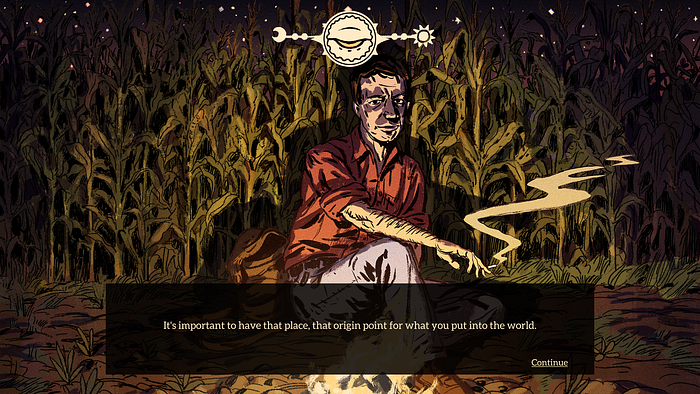
However, my role wasn’t as a writer — or, at least, not ONLY as a writer. I’m going to talk about the game from a very high-level perspective, trying to cover my roles as programmer, designer, funder, “visionary” and “studio head” (those last two in quotes because they’re silly titles for various reasons).
I’ll approach this in classic Game Developer Magazine (RIP) format, starting with the things I think went well, and then the, uhh, other side, but I’m also going to talk a little bit about the reception and success of the game.
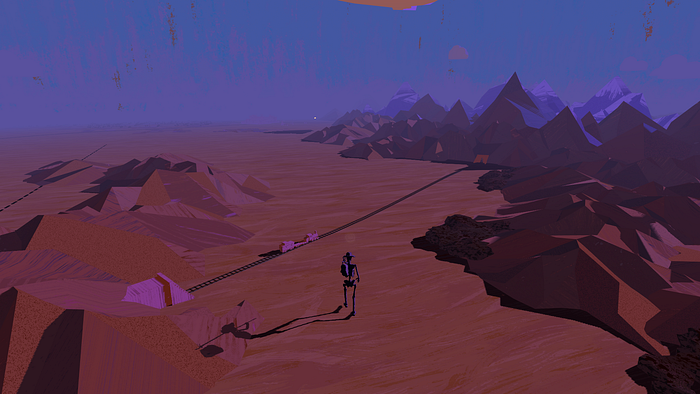
What Went Right
1 Gathering a fantastic crew of incredibly talented writers from a variety of diverse backgrounds. This was one of the early “big ideas” of the game — that it would be interesting to attempt game narrative as an anthology work, asking a number of different people to each write a separate story, tied together only by theme and the fact that they exist in the same world. Of course writing teams are not a new thing for games, but attempting to present many separate narratives instead of one big central one is, to the best of my knowledge. And the talent of the individual writers was critical. I wanted this to be a game that stood mostly on the quality of its writing, and nearly every review of the game, except for the ones that were wrong, recognized and celebrated the incredible work of the character and vignette writers. I am also very happy that we managed to represent a huge amount of America’s diversity in the writing staff for the game, and I’m proud that we gave a number of new or unheard voices a place to tell their stories.
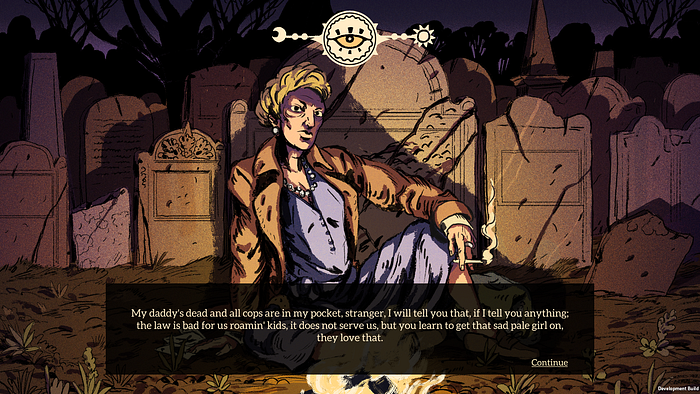
2 The music. The title of Where the Water Tastes Like Wine comes from a folk song, and the world of American music was the world we were attempting to capture in the game. So of course bringing that music into the game was a key part of creating the final experience. I was lucky enough to meet and work with Ryan Ike, a spectacular composer. He and I worked together to try to capture the huge variety of music in the US, and he wrote blues songs, gospel, jazz, folk, bluegrass, cowboy music, Latinx music, a Diné-inspired piece, and even a little psychedelic rock. He also tapped a number of live performers to record it (rare in video games). Again, the music was called out by players and reviewers and you can download the soundtrack or get it on vinyl.
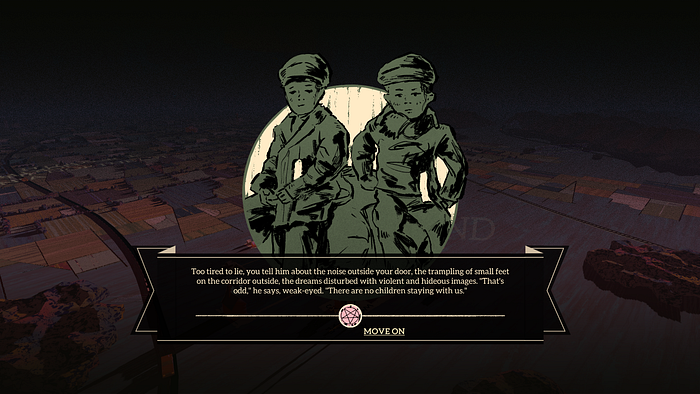
3 The voice acting, and especially supporting SAG-AFTRA performers. This being my first time hiring performers at all, and especially working within the constraints of the union procedures, this was a little tricky at points. But Katie Sikkema of SAG and Sarah Elmaleh (who plays Rose in the game, and who is a wonderful friend) helped me to navigate the trickier bits and in return we have a literally unbelievable cast of performers for an indie game. Not only folks like Cissy Jones, Keythe Farley and Dave Fennoy, fantastic and celebrated game performers, but also… Sting? Like, the most-famous-ex-law-enforcement-professional Sting. Harkonnen Sting. He’ll Be Watching You Sting. There is no world in which that is possible.
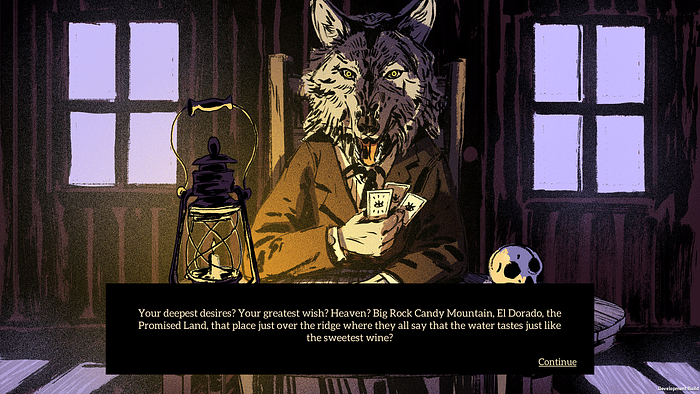
4 Attention from press, festivals, and awards groups. Early on the striking art style and unique concept and setting caught the attention of press and others. The game got to debut its first teaser trailer at The Game Awards in 2015, had many early articles written about it, and was awarded and nominated at shows and festivals including Day of the Devs, The MIX, E3, Indiecade, A MAZE, and PAX. That culminated in an IGF nomination in the Narrative category. In addition, after launch we got coverage and reviews by most major video game publications, and mainstream press as well — the Washington Post said “‘Where The Water Tastes Like Wine’ is a giant leap forward for video game storytelling”, which was very nice of them.
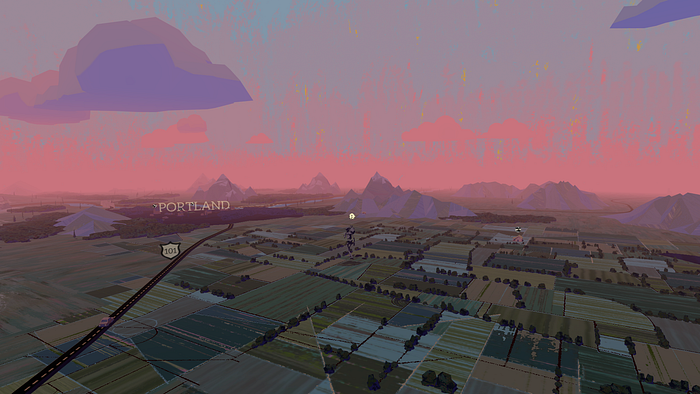
5 Publisher support. Near what I thought was the end of development, I was looking for help to finish the game. I needed help marketing and promoting it, and as a stretch goal I wanted to add voice acting to the game. While showing the game at SXSW, I met folks from Good Shepherd (then Gambitious), who were interested in talking. As you can see from number 3 above, the voice acting part happened and was amazing. In addition Good Shepherd helped with marketing, PR, and promotion (creating a giant booth at PAX, complete with haybales and real fruit), arranged for Sting to be in the game, and funded localization and multiple QA passes for the very large game.

6 Art. As you can see from the screenshots sprinkled through here, the art style of WTWTLW was unique and attention-grabbing. This is the result of a series of collaborations — first with the illustrator Kellan Jett, who created the 2D style of the game, then with the environment artist Lauren Cason, who worked with Kellan to develop a 3D style that complemented the 2D art. A small group of freelance artists helped patch up missing skill sets. Finally, my partners at Serenity Forge, led by the art director Kersti Kodas, followed through to actually create the majority of the production assets for the game, rapidly and professionally executing on the style as well as adding their own designs and touches.
What Went Wrong
1 Lack of playtesting, especially closer to launch. The biggest complaint from reviewers after the game launched had to do with the pacing, particularly in the later parts of the game. The reason for this is simple: we didn’t play it much. While we had a full QA team, they were focused on finding functional problems. When all the systems were in place, it was very late in development, and playing through the game took 10–20 hours. If you make a 10–20 hour game, guess how long it takes to playtest? And so I only managed to do a few full playthroughs of the game near launch. I didn’t make time to send the game to friends and colleagues, either — it was changing so rapidly and I had so very much to do. As a result, I completely missed the fact that the slow pace, combined with collecting ALL the content on the first time through an area, combined with the fact that the game asks you to traverse areas multiple times in order to chase down all the characters, meant that the late part of the game could get dull and empty. This was exacerbated for reviewers because they often need to play the game fast, to hit a deadline. Additional playtesting might also have exposed the weaknesses in our tutorials, the repetition in certain content, and various UI and experience hiccups that I now feel should have been polished. Since launch, I’ve addressed many of these issues — the best playtesters, it turns out, are an army of disgruntled reviewers. (This is absolutely not true.)
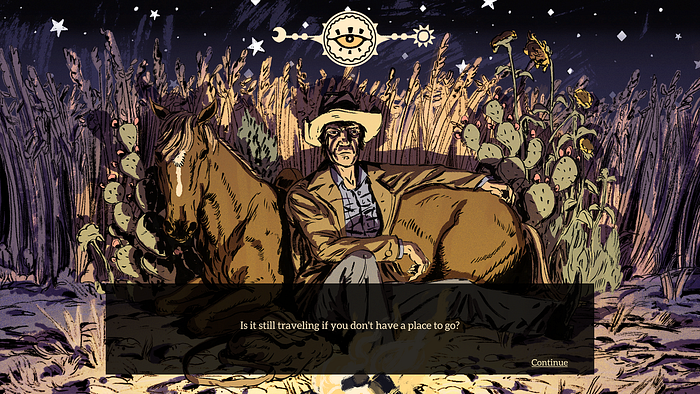
2 Lack of expertise. I’m very happy with how much I learned during the making of this game, but I didn’t originally have the knowledge I needed to tackle many of the issues I encountered during development. I decided to play to my strengths: I knew I was not much of a systems designer, so I decided to do a “systems-light” game, not realizing how much pressure that put on other parts of the game. I am not a level designer or open world architect, but I found myself laying out the United States map and trying to plan interesting paths through it for the players. Early on, I assumed I could edit the writing myself — it was only later that I brought on Laura. I should have had her in place as editor from the beginning. I didn’t know how to run a business, how to structure contracts, how to direct voice actors, how to market a video game, how to approach business deals, or how to manage contract employees. I don’t even think I knew the term “narrative design” when I began this project. Unfortunately, right about when I was learning how much there was to know was also when I was running out of money to hire additional experts to help, and I had to tackle most of the above myself. Luckily, I have learned a lot, and I have either fixed, or made plans to address many of the problems that have come to light since release. The game as a whole will improve for current and future players and platforms.

3 Loss of key people at exactly the wrong time. Just as we were figuring out what the game was, and what it looked like, the game lost both of its artists. For several months, until Serenity Forge rescued me, I had partially-finished assets and no budget to complete them. This was probably the closest the game came to being canceled or changed beyond recognition — if it hadn’t been for meeting Z from Serenity Forge at an IndieCade party, that might have been the end of the railroad for Where the Water Tastes Like Wine.

4 Forgetting that the PC uses a mouse and keyboard. This sounds silly, but it’s a trap other solo devs could fall into — assuming players would consume the game as I did. Whenever I play platformers or third-person games on my PC, I use a gamepad —and I did the same for Where the Water Tastes Like Wine. As a result, the controls were tuned and polished for gamepad, and the mouse and keyboard, while functional, were relegated to second place. However, we shipped on computers, not consoles. Even if PC gamers have a gamepad, they often prefer MKB controls. This meant that for reviewers and early players, the controls were suboptimal. It also had more subtle effects — a controller only has so many buttons, and it’s common to mash them all at various times to experiment with what the game can do, leading to natural discovery of under-tutorialized systems. However, no one goes into a game and starts hammering on their keyboard to discover things . So players would miss the button that opens the map, not know how to access the inventory, and not understand about whistling and hitchhiking.
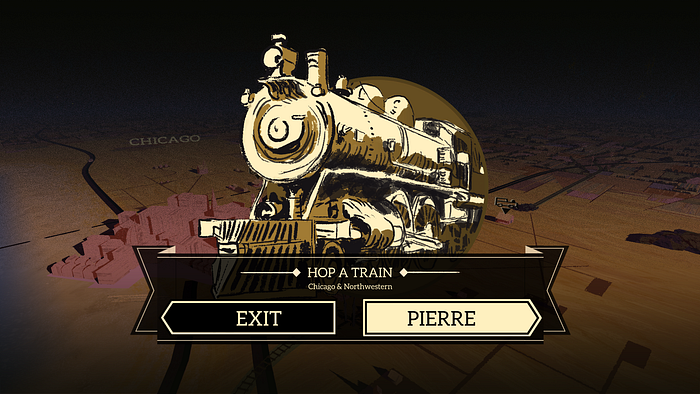
5 Ambition. Really, this game was too big, it was too much to take on as a solo dev, and especially too much to take on as a commercial product. It’s a brand-new genre, experimental in nature, and heavily dependent on content — most of which I can’t create myself. That means it was expensive to make and to test, and at the best of times sales would be limited to people who were on board not just for narrative games, but for experiments in narrative games (I was surprised, after release, at how hostile some members of the IF/Narrative games community were towards the game, especially the 3D parts). The experimental nature meant that I couldn’t just crib from already-established examples of this type of game — there aren’t any. Ironically, I thought I was making a small game. Because it was going to be mostly text and lean heavily on 2D art with simple 3D art, I assumed it would be easier to create, and my initial timeline was 2–2.5 years (Gone Home took about 1 year and 9 months to make). The game ended up taking almost 4 years to develop.
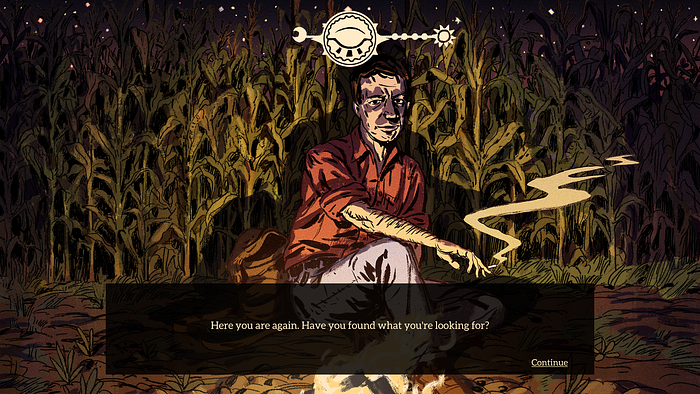
6 2018. This is a tough, tough time for indie games (and maybe AAA games) of all sorts. When I started this game I was fresh off Gone Home, a niche, experimental narrative game. It had been well-received, and in the light of that, in 2014, starting a similar project seemed like a good creative and financial risk. Four years later, making any commercial game at all seems like a bad idea, and taking on the risk of an experimental, ambitious game like Where the Water Tastes Like Wine sounds terrifying. On the other hand, the topics the game covers, while relevant in 2014 (and every year, it turns out) have taken on special significance now.
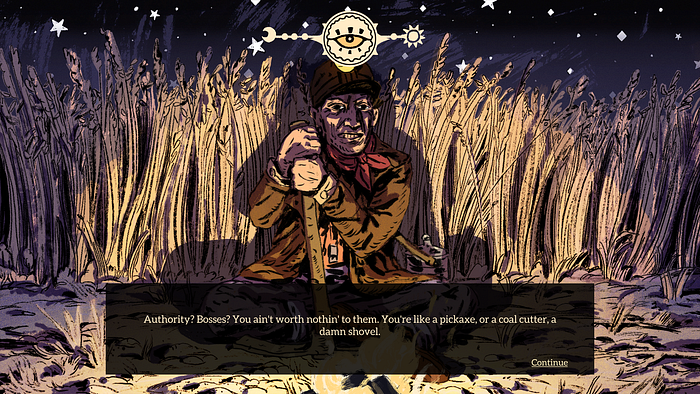
A Dim Bulb Lighting the Way Forward
Now I’m going to get in to the reception of the game and my conclusions about what it means for me and the game industry as a whole.
On a critical level, the game has not performed as well as I had hoped or expected. Coming off of all the attention, and especially the awards, I had assumed that if it failed to find an audience, it would at least be recognized by the press as something exciting. However, I forgot that festivals and awards bodies, as well as preview coverage, focus heavily on the ideas and promise of a game and maybe consider only the first few hours of play. Reviews look at the whole experience, and many places found that lacking. The game currently has a score of 75 on Metacritic. Some folks loved the game, others found it mediocre, often because of the pacing issues I mentioned above. A 75 isn’t terrible but it’s not what I wanted, obviously, nor do I feel like that number represents the actual quality of the game.
Luckily, our Steam user reviews and even Metacritic user reviews are better — we’re currently rated “Very Positive” on Steam. I think the difference between official scores and user reviews are a result of two things: one is that user reviews are from a self-selecting niche of people who are Into This Sort Of Thing, and the other is that users have the time to play the game at its own pace, which will minimize many of the problems reviewers faced.
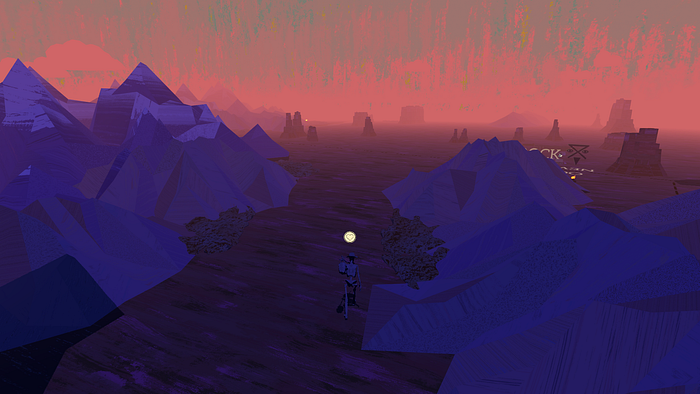
Commercially, it’s a disaster. I can’t discuss exact numbers, but in the first few weeks fewer people bought the game than I have Twitter followers, and I don’t have a lot of Twitter followers (and this tells you a lot about how effective marketing via Twitter is).
So far, I have made $0 from the game. That may look like a high number, but consider that it took four years to make — that works out to approximately $0/year. Compared to the $120,000+/year salary of a 15-year veteran in a AAA studio, it begins to look a lot smaller! And then if I go into the hourly breakdown… I don’t have an actual count of hours spent making the game, but there was a lot of crunch that went into it, so I am guesstimating I made about $0/hour. That’s not a lot! And then once you factor in the ~$140,000 I spent paying my contractors and collaborators for the game, you begin to see that maybe it wasn’t, financially speaking, worth it. I guess I will have to wait a bit longer to buy that Juicero.
Joking aside — that’s dismal. And terrifying. At the end of the day it’s astounding that a game that got this much attention from the press, that won awards, that had an all-star cast of writers and performers, that had a bizarre celebrity guest appearance(!) failed this hard. It scares me.
I am going to be OK, at least for the moment. I don’t own a house, so I didn’t mortgage it to ship this game (being a millennial pays off!). I’m only responsible for myself, and I didn’t spend the last of my savings, plus I have marketable skills that I can hopefully use to keep myself fed in the future. I’m glad that I got to pay so many talented people for their skills, and that there were only a few folks getting paid through revenue share (there were a few, and I feel terrible about that). I am also very glad that many of the people who worked on this game are already using that fact and their experience to find other work with teams — if everyone else who worked on this ended up better for doing so, that’s a great reason to have made it.
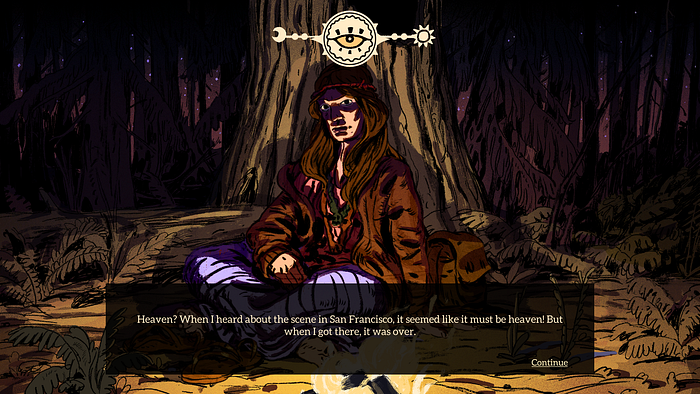
I debated taking another AAA job. I considered leaving games, although I am not sure where I’d go. (I recognize that I am incredibly privileged that those are my options.) Instead, I decided to drastically lower my cost of living and move somewhere more affordable than San Francisco. I will try to continue doing independent game development in some form or another, but not depend on making much money from it.
That last part should be worrying for anyone in the indie games industry. WTWTLW could have been a non-commercial game, but it would have had to be very different. It would be far less polished, it wouldn’t have had the collaborators that it did, I could not have paid people who couldn’t afford to work for revenue share or for the love of the game (thus, I fear, cutting out some of the most valuable voices that this game was a platform for). I could have developed it as a side project, but it took me 4 years as is. Basically, I’m not sure that games like this one can continue to be made in the current market.
That doesn’t mean no one will make experimental games, or work with diverse collaborators. You can just have a look at the front page of Itch.io to see the variety of fantastic projects that are being created every day. I have faith that some projects of small indie studios will continue to be successful — if they can take the risk.
I wish it were easier.
The End
That’s it! Thank you for reading this far, for engaging with the story behind this game, and for playing it. And thanks to all the supporters I and the game have had through the years of development, it has been a wonderful ride. Not one I’m sure I’d take again, offered the chance, but certainly an adventure.
